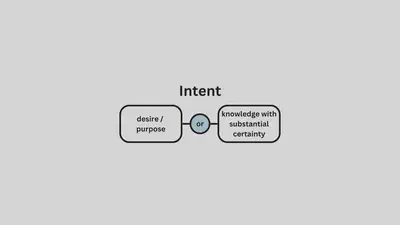Intentional Torts

Structure for this Part of the Course
Intentional Torts:
— Battery
— Assault
— False imprisonment
— Intentional infliction of emotional distress
Defenses:
— Consent
— Self-defense
— Defense of property
— Necessity
Garratt v. Dailey
“The Five-Year-Old Who Pulled the Chair Out from Under Her”
Abridged Definition from Restatement (Third) of Torts A person acts with the intent to produce a consequence if:
(a) the person acts with the purpose of producing that consequence; or
(b) the person acts knowing that the consequence is substantially certain to result.

—
Alcorn v. Mitchell
“The Angry Spitter”
—
Picard v. Barry Pontiac-Buick, Inc.
“The Camera Toucher”
Battery
Abridged Definition from Restatement (Second) of Torts
An actor is subject to liability to another for battery if he acts intending to cause a harmful or offensive contact with the person of the other or a third person, or an imminent apprehension of such a contact, and a harmful or offensive contact with the person of the other directly or indirectly results.

Assault
Abridged Definition from Restatement (Second) of Torts
An actor is subject to liability to another for assault if
(a) he acts intending to cause a harmful or offensive contact with the person of the other or a third person, or an imminent apprehension of such a contact, and
(b) the other is thereby put in such imminent apprehension.

Wishnatsky v. Huey
“The Offended Interrupter”
With intentional torts, always consider
- The legal interest that each intentional tort addresses
- The requirements of the defendant
- The requirements of the plaintiff
- Any objective requirements, including analysis that the judge or jury must conduct
The legal interest that each intentional tort addresses
Battery
Freedom from harmful or offensive contact
Assault
Freedom from apprehension of harmful or offensive contact
False Imprisonment
Freedom from confinement
IIED
Freedom from severe emotional distress